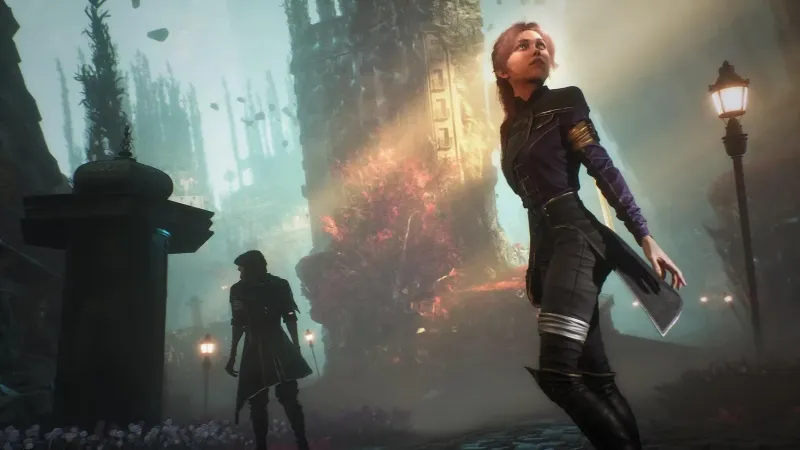Watching a great game receive the critical and commercial success it deserves is always gratifying. It’s certainly not always the case. But Clair Obscur: Expedition 33 seems to be on track to succeed in garnering both. Our review was one of many that sing the game’s praises, and an audience voracious for a great JRPG-style release also seems to have found the game. But it’s not just that Clair Obscur scratches an itch for fans of games like Persona or Final Fantasy. While leaning heavily on inspiration from some classics in the genre, Sandfall’s RPG establishes a mature, artistic, and complex web of narrative, mechanics, and themes and challenges its audience to keep up.
Video games had their birth and early days as a children’s pastime, and even as the medium has grown over the decades and many of its players have aged into adulthood, it’s a reputation that’s been hard to leave behind. That reputation comes, in part, because some games, even while targeting an adult audience, continue to wear “kid gloves” about the content within. Even when games like The Last of Us, Cyberpunk 2077, or Elden Ring prove the potential of a more nuanced approach to storytelling or game systems, the prevailing wisdom in some circles seems often to be that every game must somehow cater to all.
While I respect the need to justify big budgets with outreach to big audiences, longtime game players know how this approach can dilute an otherwise great game. Simplified storytelling where everything is neatly explained. Streamlined combat demands little in the way of attention or focus. Leveling systems that lead to an ideal build no matter your choices. While there’s certainly a place for that approach to design, a game like Clair Obscur helps to prove that it’s not the only way to go.
From its opening minutes, Expedition 33 challenges its players. Where are we? Is this the real world? What has happened here, and why is everyone tinged with melancholy and grief? There seems to be an existing relationship between these two characters, but the game doesn’t immediately tell me what it is. Were this a sci-fi novel, we’d take this as a matter of course for the nature of the genre. However, in a new role-playing video game, this level of disorientation is almost a shock to the system.
But it’s a welcome one! The early hours kept me riveted as I sought to put the pieces together. Small clues and dialogue subtext help to communicate essential beats that define characters, from their sexual histories with one another to the complicated family dynamics that govern their inner lives. The mysteries of why the world is the way it is are left hanging for dozens of hours, with only tantalizing jigsaw pieces to consider ahead of when a more complete picture emerges near the end of the game. Clair Obscur refuses to hide from difficult topics like the impact of mourning or suicide in the face of despair but also allows its characters the narrative space to explore those ideas with sensitivity.
Likewise, Sandfall Interactive lets its production, audio, and art design follow suit. Clair Obscur’s music is an eclectic mix of classical piano and voice, often juxtaposed against sudden shifts into whimsical sounds you might imagine hearing in Parisian street music. Visuals have a painterly blur that ties closely with central narrative conceits. Cinematic character camera work is unflinching and close-up, revealing both big and subtle facial emotions. Across the board, directorial choices appear conscious and purposeful in support of driving home the game’s themes of family, loss, and hope. At no point does the game back up and figuratively ask: “Are you keeping up? Do you understand what’s happening?” I found the lack of coddling refreshing.
The same approach extends to gameplay. While we’re tracing familiar shapes of a turn-based and level-driven RPG, Clair Obscur gives its players room to discover systems organically. Dodging and parrying in combat require constant attention and learning. Don’t understand Pictos and Lumina? Well, it all makes sense, but only if you take some time to experiment and create a solid character build. Different characters require distinct playstyles and build philosophies, so no one-size-fits-all approach defines how to improve.
Clair Obscur: Expedition 33 embraces the idea that simply understanding its contours and shape is part of the game, not a necessary evil players must get past to enjoy it. By allowing for confusion and a sense of displacement, the game reinforces the narrative structure its characters face in their lives. Gustave, Maelle, and the others don’t understand what’s happening either, so we’re all in the same boat, floating to an unknown continent without all the answers. It takes a developer extremely confident in its own work to take such a leap – to trust its players to come along knowing they won’t have all the answers – but Clair Obscur elevates itself to greatness by doing just that.


